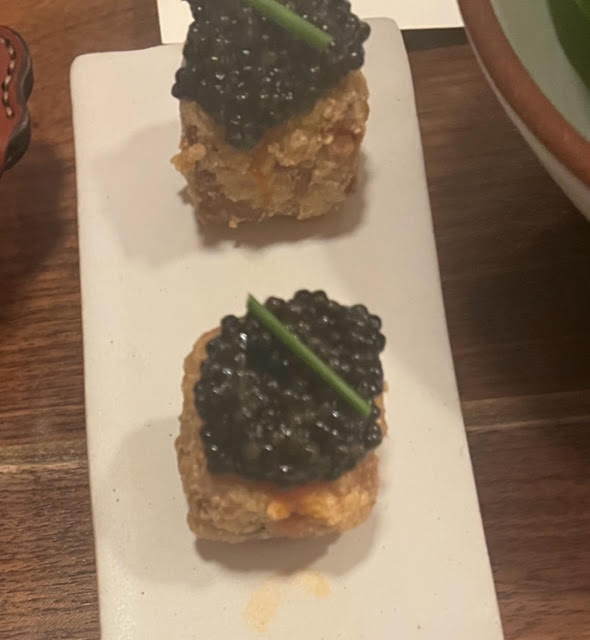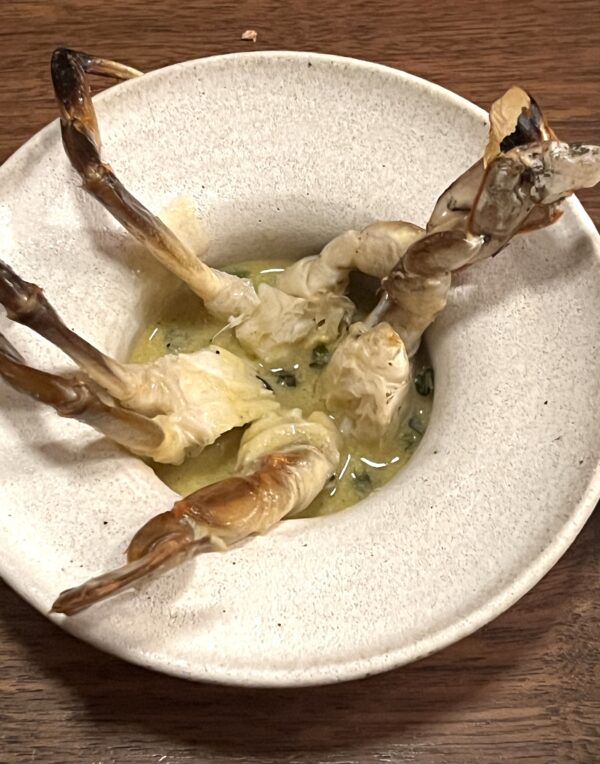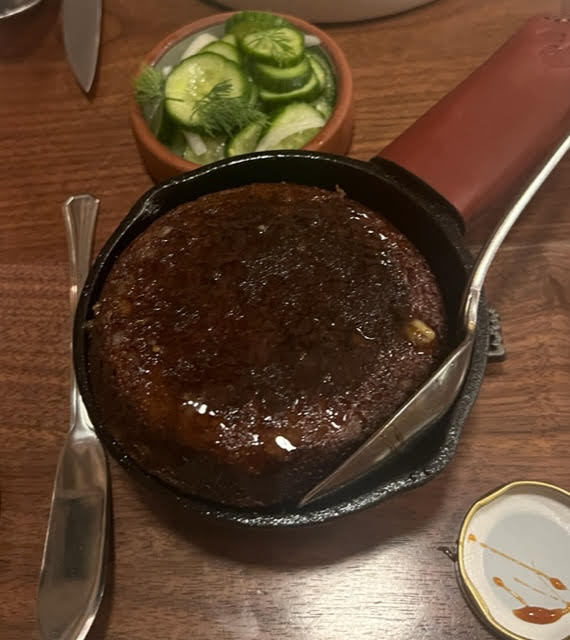A recent trip to our nation’s capital was the perfect opportunity to sample Washington’s thriving restaurant scene, including Chef Jeremiah Langhorne’s The Dabney, located on Blagden Alley in Northwest DC. Once considered a haven of crime, prostitution and poverty — Eleanor Roosevelt reportedly called it “the most despicable alley in America” — Blagden Alley was designated a National Historic District in recent years and has become a top dining destination.
Consistently rated as one of the top restaurants in DC, The Dabney offers a comfortable dining room and bar in one of the historic alley’s structures, along with a fascinating tasting menu that focuses on local Mid-Atlantic cuisine. Sourcing from local producers ranging from crab fishermen to asparagus farmers, the menu features traditional Chesapeake Bay fare pared with imaginative contemporary touches.
One outstanding example of the high-low approach to dining is the pairing of scrapple — a traditional regional mixture of pork scraps and cornmeal which was a staple of both white and African-American local culture — with a dab of caviar on top. It’s Langhorne’s statement honoring the culinary traditions of both the Mid-Atlantic cultures and the sophistication of contemporary dining.
The Dabney’s take on local seafood is also refreshing and even inspiring. Instead of the usual boiled and spiced whole crab, the menu includes soft-shelled crab legs, presented delicately with a subtle lemon sauce. Other highlights include smoked kohlrabi with coriander and mustard, charred asparagus with black morels, and grilled tilefish with fava beans. My down-home favorite was a cornbread made with dark cornmeal and served with sorghum butter — a melt-in-your mouth treat.
Service was impeccable, with each of the servers explaining in detail not only the ingredients of each dish, but also the overall narrative of the chef’s approach to cuisine. The evening was not only a culinary, but also an aesthetic pleasure.
(Photos by Nancy Kay Turner)



